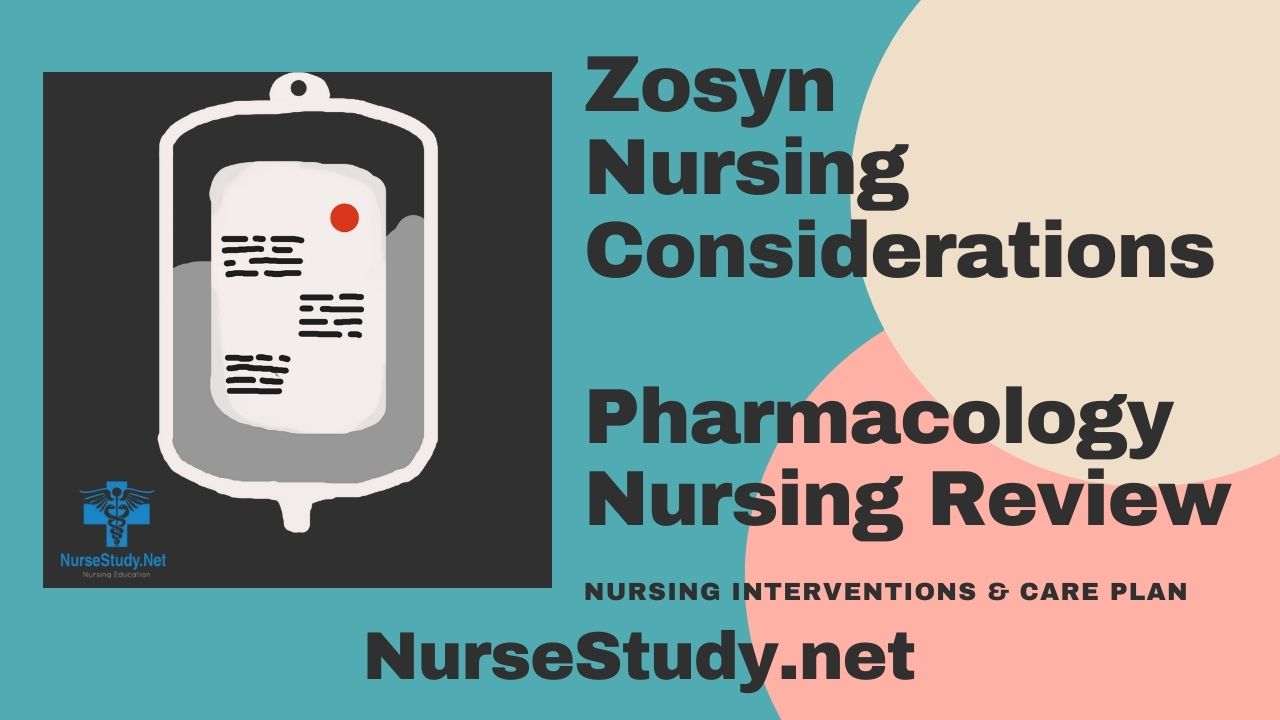Zosyn is a combination antibiotic containing piperacillin (an extended-spectrum penicillin) and tazobactam (a beta-lactamase inhibitor). This powerful combination is used to treat moderate to severe bacterial infections in various body systems.
Generic names: Piperacillin and Tazobactam
Brand names: Zosyn, Tazocin (UK, Canada), Piptaz
Pharmacologic class: Beta-lactam antibiotic/beta-lactamase inhibitor combination
Therapeutic class: Anti-infective
Mechanism of action: Piperacillin interferes with bacterial cell wall synthesis by binding to specific penicillin-binding proteins. Tazobactam prevents bacterial beta-lactamase enzymes from inactivating piperacillin, enhancing its effectiveness against resistant organisms.
Indications for use: Treatment of moderate to severe infections including:
- Intra-abdominal infections
- Skin and soft tissue infections
- Lower respiratory tract infections
- Complicated urinary tract infections
- Nosocomial pneumonia
- Bacterial septicemia
- Gynecologic infections
Precautions and contraindications:
- Hypersensitivity to penicillins, cephalosporins, or beta-lactam antibiotics
- History of severe allergic reactions
- Patients with renal impairment (requires dose adjustment)
- Pregnancy (Category B)
- Nursing mothers
- Patients with electrolyte imbalances
Drug Interactions
- Probenecid can increase blood levels of piperacillin/tazobactam
- Aminoglycosides may have increased effectiveness when given together
- Vecuronium’s effects may be prolonged
- Methotrexate levels may be increased
- Blood thinners may have increased effects
Adverse Effects
- Diarrhea
- Nausea and vomiting
- Headache
- Insomnia
- Rash or allergic reactions
- Electrolyte imbalances
- C. difficile-associated diarrhea
- Local injection site reactions
- Rarely: Stevens-Johnson syndrome, seizures, or severe allergic reactions
Administration Considerations
Available preparations: Powder for injection (2.25g, 3.375g, 4.5g vials)
Dosages: The typical adult dose is 3.375g every 6 hours or 4.5g every 8 hours, depending on infection type and severity. Dosing requires adjustment for renal impairment.
Administration specifics:
- Must be administered intravenously
- Infuse over 30 minutes
- Onset: Immediate
- Peak: End of infusion
- Duration: 6-8 hours
Nursing Considerations for Zosyn
Related Nursing Diagnoses
- Risk for infection related to inadequate secondary defenses
- Acute pain related to infection
- Risk for allergic reaction
- Risk for fluid volume deficit related to diarrhea
- Deficient knowledge related to medication regimen
Nursing Assessment
- Assess for penicillin or cephalosporin allergies before administration.
- Obtain complete health history, including:
- Current infection symptoms
- Previous antibiotic use
- Kidney function
- History of seizures
- Electrolyte imbalances
- Monitor vital signs and assess infection site before and during therapy.
- Evaluate renal function through BUN and creatinine levels.
- Assess for signs of superinfection or C. difficile infection.
Nursing Interventions
- Administer Zosyn at prescribed intervals to maintain therapeutic blood levels.
- Monitor the IV site for signs of phlebitis or infiltration.
- Obtain cultures before initiating therapy when possible.
- Monitor complete blood count, renal function, and electrolytes regularly.
- Document response to therapy, including temperature trends and infection site changes.
- Monitor for signs of allergic reaction during and after administration.
- Maintain adequate hydration to prevent kidney complications.
Patient Teaching Associated with Zosyn
- Explain the importance of completing the full course of antibiotics.
- Instruct patients to report any signs of allergic reaction immediately:
- Rash
- Itching
- Difficulty breathing
- Swelling of face or throat
- Advise patients about potential side effects:
- Diarrhea
- Nausea
- Headache
- Insomnia
- Educate about the importance of maintaining adequate fluid intake.
- Instruct patients to report severe or persistent diarrhea, which could indicate C. difficile infection.
- Teach patients about the importance of regular lab monitoring during therapy.
- Advise patients to inform all healthcare providers about their antibiotic therapy.
This is not an all-inclusive list of possible drug interactions, adverse effects, precautions, nursing considerations, or patient instructions. Please consult further with a pharmacist for complete information.
References and Sources
- Nguyen, H. M., Shively, N. R., & Randhawa, A. K. (2023). Piperacillin-tazobactam: A Review of Clinical Efficacy and Safety in Complicated Infections. Antimicrobial Agents and Chemotherapy, 67(2), e01975-22.
- Rhodes, N. J., & Scheetz, M. H. (2022). Optimizing Piperacillin-Tazobactam Dosing Strategies: A Focus on Critical Care. Critical Care Medicine, 50(3), 452-463.
- Yang, L., & Zhang, Y. (2023). Current Perspectives on Piperacillin/Tazobactam: Clinical Applications and Resistance Mechanisms. Journal of Antimicrobial Chemotherapy, 78(4), 897-909.
- Wilson, D. T., & Smith, R. G. (2022). Best Practices in the Administration of Beta-Lactam/Beta-Lactamase Inhibitor Combinations: A Systematic Review. Journal of Infusion Nursing, 45(6), 321-334.
